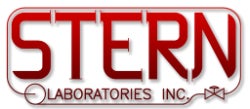

A variety of tools have been designed, fabricated and tested for use in remote inspection and handling of spent (used) nuclear fuel which is stored underwater in pools at nuclear stations.
Tools suitable for grasping, prying and surface cleaning operations which are performed at the bottom of the fuel inspection pools have been adapted for use with a universal tool handle which is manually actuated from above the pool. Tools are fabricated from passivated stainless-steel to minimise corrosion.
A ‘Light Pipe’ camera system has been developed to provide fuel inspectors with high-resolution video for performing underwater inspections and other operations as a replacement for expensive periscopes.
Resolution and colour standards can be provided for underwater cameras and periscopes, and identification clips for disassembled fuel elements.
A ‘Chopper Tool’ system has been developed for removing irradiated In-Core (neutron) Flux Detectors (ICFD) from a CANDU reactor. The chopper tool is a small, modular assembly for installation in cramped work spaces and works with both horizontal and vertical IFCD assemblies. It has a minimum number of moving parts to maximize reliability and is powered by compressed air.
The device is remotely operated after the initial setup. Detectors are drawn from the wells and cut into ~1/8in particles that are transported to a nearby shielded canister. Up to 12 detectors can be stored in one canister.
A shielded flask is provided for temporary storage of the filled canister. A large water tank which simulates the spent fuel bay in a nuclear reactor is used for testing prototypes of the inspection tools and for training fuel inspectors.

